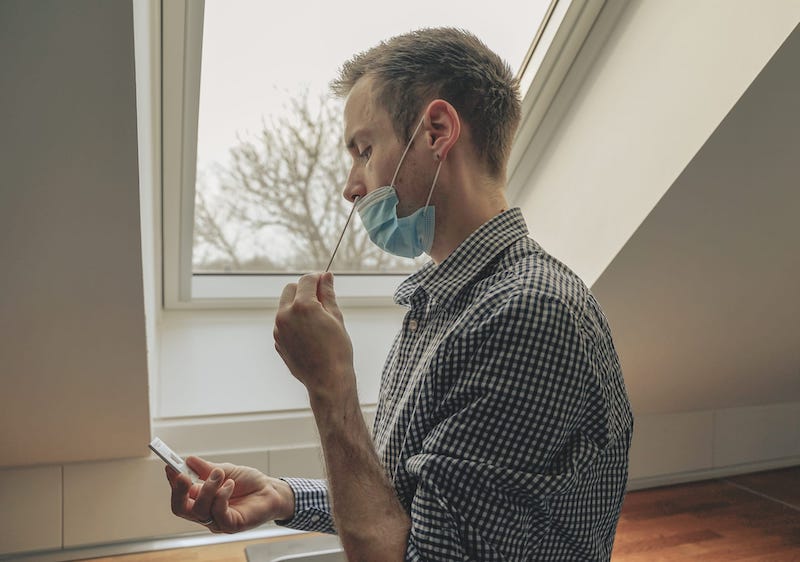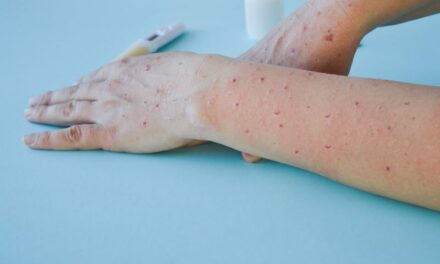A high-quality assay that can be used in at-home tests for rapid COVID-19 screening—which may be just as reliable as the laboratory-based PCR molecular tests—was designed by researchers at the University of Illinois Chicago.
“Having fast and easy-to-use tests for COVID-19 is critical, especially in the communities that have low rates of vaccination and low access to health care services, including COVID-19 surveillance and diagnostic testing,” says Xiaowei Wang, PhD, UIC professor of pharmacology and bioengineering. “The current crisis has created an unprecedented need for rapid tests that are highly sensitive and the sooner we can develop better technology and testing options, the better it will be for everyone.”
Assay reagents create a chemical reaction when mixed with a biological sample containing a virus or other marker. For example, an at-home pregnancy test consists of assay reagents that react to pregnancy hormones in a urine sample.
In laboratory molecular tests, scientists mix samples with assay reagents in a highly controlled process. Because the reaction conditions (like temperature) are tightly controlled, the tests are both sensitive and selective, meaning the chance of false positives or false negatives is very low. However, these laboratory tests can be expensive and are not accessible in all communities and field settings.
The challenge with at-home and field tests is that they need assay reagents to work under less controlled conditions, which increases the chances for false results or inconclusive tests. One method, called loop-mediated isothermal amplification (LAMP), which uses six DNA primers for pathogen detection, has shown promise for other pathogens, like malaria, but has not been efficiently applied to COVID-19.
Wang and the UIC researchers who developed the new COVID-19 assay first created and applied a bioinformatics algorithm to identify the best potential DNA primer combinations for reliably detecting SARS-CoV-2, the virus that causes COVID-19, with the LAMP method. Then, the researchers ran a series of simulations to optimize the conditions under which the potential DNA primer combinations worked best in the field environments.
After using their analysis to develop a testing method using the DNA primers and conditions, the team designed experiments to see how the test performed.
In experiments, Wang and his collaborators processed artificial samples and human samples with a standard PCR test and with their new test. When the results were compared, the researchers not only saw significant improvement in the efficiency of their test over others using the LAMP method to detect the virus but also that it was comparable to more expensive gold standard PCR tests.
In their article, “Developing RT-LAMP Assays for Rapid Diagnosis of SARS-CoV-2 in Saliva,” published in the journal EBioMedicine, the researchers report that the new LAMP assays were as effective as standard PCR assays in SARS-CoV-2 detection and that their new assays have unique advantages, like speed and direct detection of viral RNA in saliva, that make the test “ideal for inexpensive point-of-care diagnosis.”
Wang said this lab-based study shows that their test works, but that they will need to validate the test in further studies with a greater number of samples from real patients. He hopes that by summer they will have conducted a study including about 1,500 patient samples. If the study validates the test, the data will be submitted with an application to U.S. Food and Drug Administration for Emergency Use Authorization.
The research was supported by grants from the National Institutes of Health (R01DE026471, R35GM141535, R01GM089784, R56HL149881, 3R01ES028615-06S1).
UIC’s Xin Huang and Gongyu Tang, who are from the department of pharmacology and regenerative medicine and members of the University of Illinois Cancer Center, and UIC’s Dr. Nahed Ismail, from the department of pathology, are co-authors of the paper.





